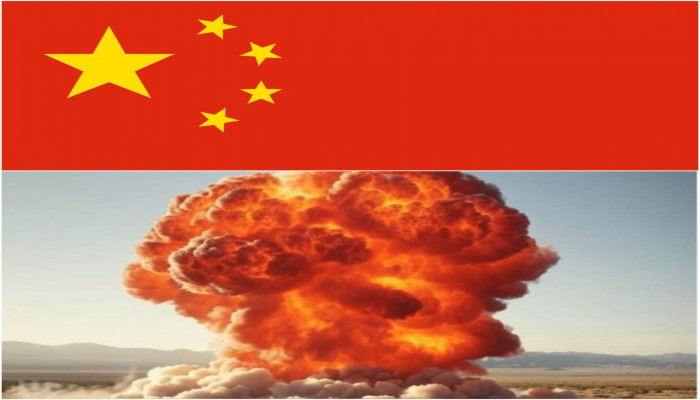China tests non-nuclear hydrogen bomb, creates 1,000°C fireball in massive blast
- In Reports
- 05:28 PM, Apr 21, 2025
- Myind Staff
Chinese scientists have tested a new type of non-nuclear hydrogen bomb that creates a long-lasting, extremely hot fireball, marking a major step forward in both military and energy technology. According to the South China Morning Post, the 2-kilogram device was tested in a controlled environment and produced a blazing fireball hotter than 1,000°C, lasting more than two seconds. That’s about 15 times longer than a similar TNT explosion. The key to this effect is magnesium hydride, a solid material used to store hydrogen.
The bomb, developed by the 705 Research Institute under the China State Shipbuilding Corporation, relies on magnesium hydride, which looks like a shiny powder and stores hydrogen more efficiently than gas tanks. When detonated with regular explosives, the material breaks into tiny particles, discharging hydrogen gas that combines with air and ignites. The heat from this explosion causes even more magnesium hydride to break down, freeing more hydrogen and maintaining the fireball.
The explosion produced an overpressure of 428.43 kilopascals at a distance of two meters, about 40% of what TNT would generate, but its heat impact was far greater, capable of melting aluminium alloys and causing precise, widespread destruction. This technology can direct energy toward specific targets, making it ideal for striking high-value objectives or covering large areas with intense heat.
Although the study didn’t mention exact use cases, the device fits into China’s broader efforts to adopt cleaner energy in its military, such as powering electric warships and drones that can stay airborne longer. Researchers also point out that the technology could be helpful in powering submarines and drones, blending military needs with sustainable energy innovation.
A prominent breakthrough comes from China’s new magnesium hydride plant in Shaanxi, which produces 150 tonnes a year using a safer and more affordable “one-pot synthesis” method, far beyond the small-scale lab outputs of just grams per day seen before. Developed by the Dalian Institute of Chemical Physics, this large-scale process lowers the risk of explosions during production and can be used for both military and civilian purposes. This advancement mirrors past shifts in military power driven by energy innovations, like the move from coal-powered ships to nuclear weapons. As the People’s Liberation Army pushes for eco-friendly modernisation, this technology highlights China’s commitment to both strategic power and sustainable development.







Comments